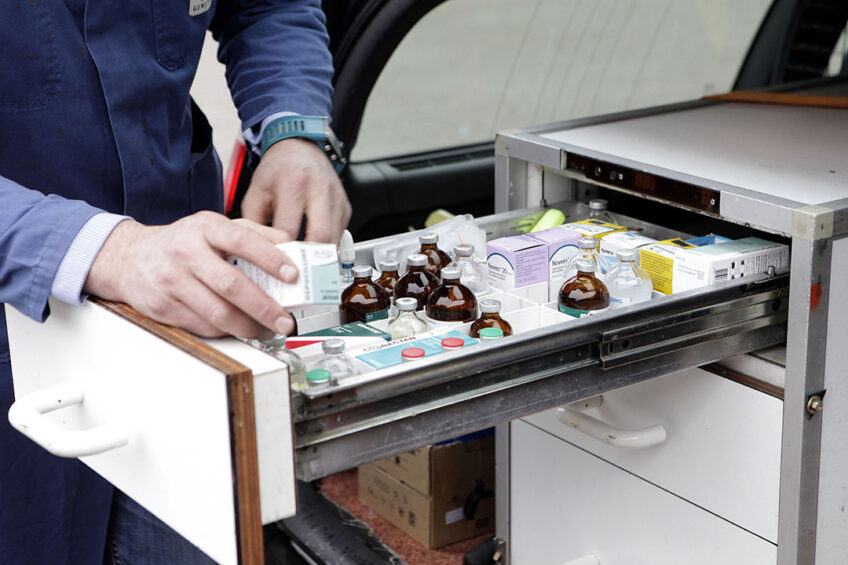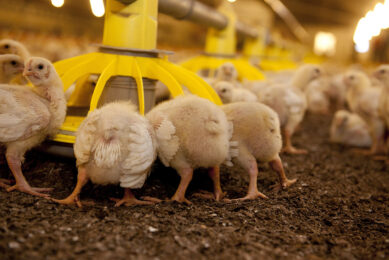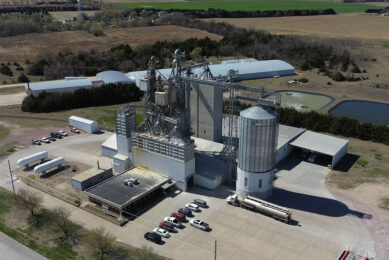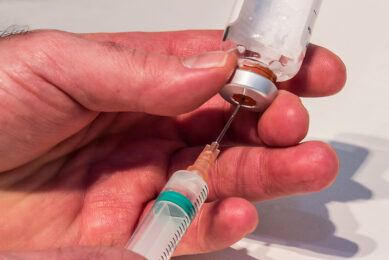Reduction of antibiotic use in farm animals

The need for antibiotics in animal production is unlikely to be completely obviated. There are, however, several approaches that can reduce the need for antibiotics while maintaining animal health.
The use of alternative agents
Probiotics and prebiotics
The use of prebiotics and probiotics to improve the composition of an animal’s gut microbiota can decrease the risk of numerous diseases. In some instances their use indirectly decreases the abundance of potential pathogens, enhances the immune response, improves overall health and feed efficiency, and promotes growth.
Plant extract
Plant extracts are considered safe and effective against certain bacteria and are extensively used in feed as growth promoters and health protectants, particularly in Asian, African and South American countries. In mono-gastric animals it is thought that oregano, cinnamon, Mexican pepper, thyme, oregano and garlic extract can decrease pathogenic microbial mass in the intestines and improve animal performance when used under the directions of the manufacturer. How these additives affect the production performance of ruminants, however, has not been reported.
Enzymes
Studies have determined that in-feed enzymes such as xylanases are effective in decreasing intestinal lesions and reducing the risk of necrotic enteritis in chickens, and reducing the risk of certain diseases, such as colibacillosis, in mono-gastric animals. In-feed enzymes, however, do not offer a promising alternative for ruminants such as cattle because the rumen inactivates any enzymes before they reach the intestine.
Antimicrobial peptides
Antimicrobial peptides are promising alternatives for growth promotion (7% increase) as well as disease prevention in chickens. Studies in dairy cattle also showed promising results for growth promotion, as well as the prevention and treatment of udder infections at times when dairy cows do not produce milk. Antimicrobial peptides also act to sanitise the udder before milking, thereby reducing udder pathogens.
Phytochemicals
Phytochemicals are plant-derived compounds, such as essential oils or tannins that may have antibacterial and growth-promoting effects. They are used in commercial poultry operations to improve the gastrointestinal health of broiler chickens and reduce levels of coccidian parasites. Phytochemicals can also be used for the prevention of disease in cattle, such as diarrhoea, and to improve digestive health. Here, however, they should be used in high concentrations which can adversely affect meat quality.
Organic acids
Organic acids, such as citric or acetic acids, are also promising alternatives for growth promotion and disease prevention in mono-gastric animals. They act by killing pathogenic bacteria and favouring the growth of certain acid-loving beneficial bacteria by increasing the acidity level of the stomach. Studies in cattle have also demonstrated a positive effect by organic acids on performance and the prevention of certain digestive diseases, such as rumen acidosis. There was also an 8% increase in weight gain in grain-fed beef cattle as a result of using organic acids in their feeding programmes.
Animal management
Although management practices may be considered routine, many have evolved as specific preventive measures to inhibit pathogenic infections and improve animal health and well-being. Management practices that have implications for reducing the need for antibiotics and other drugs focus on manipulating the animal’s environment by avoiding heat stress and overcrowding, providing adequate ventilation, controlling flies and other external parasites, along with proper litter management, as well as introducing hygiene measures to reduce exposure to disease and developing methods to enhance immunity.
Nutritional measures
There is a growing pool of evidence that nutrition can have a significant effect on the immune system, thereby influencing infection rate and reducing the need for antibiotics. The following tips provide some nutritional advice to help achieve this target.
The immune response can include antibody production and cellular proliferation, both of which require an adequate protein supplement in the diet.
An adequate calcium to phosphorus ratio in feed rations reduces the incidence of milk fever at calving which develops during dry periods.
Some trace minerals are important for maintaining the integrity of the immune system. Zinc, for example, has an important role in the formation of both T and B lymphocytes which are the major cellular components of the adaptive immune response. Another element, copper, is considered an important part of the enzyme systems that protect cells from the toxic effects of the oxygen metabolites produced during phagocytosis. It also reduces the severity of the clinical signs of some infectious diseases, such as mastitis.
Vitamins A, C, and E are also important as they act as antioxidant defences against oxidative damage and have therapeutic value in cases of infectious disease.
Biosecurity programmes
The following are basic sources for formulating biosecurity policies for food animal species. Economic analyses are needed, however, to identify the most cost-effective combinations of interventions at different production levels.
Locating herds away from potential sources of infection, including other production facilities, slaughterhouses, sale barns and roads.
Erecting fences around the farm boundaries and placing locks on doors and windows to prevent the entry of visitors.
Prohibiting the entry of vehicles used to transport animals unless they are empty and have been cleaned and disinfected before arrival at the facility.
Providing secure loading areas that prevent animals from returning to buildings once they have been exposed to trucks.
Controlling rodent and fly populations, including the use of weed control and gravel borders to discourage rodents from approaching facilities.
Ensuring that farm personnel do not come in contact with animals outside the herd.
Establishing a minimum quarantine period for people before they come into contact with livestock.
Requiring everyone to shower before entering the farm and providing clothing to wear on the farm.
Ensuring pathogen-free feed sources and establishing methods of delivering feed to farms that carefully control the access of potentially contaminated trucks.
Cleaning up outside feed spills to avoid attracting rodents and birds.
Providing secure manure storage and disposal.
Promptly disposing of dead animals.
Placing sentinel animals with incoming stock and using diagnostic tests to detect infection.
Ensuring that feed, water, bedding, equipment and supplies are free of infectious agents.
Testing replacement herds for the presence of pathogens.
References available from the author on request.











